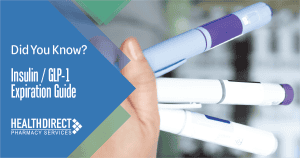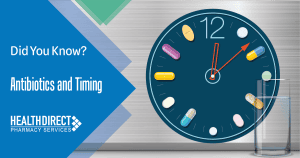What are GLP-1 Receptor Agonists (GLP-1 RA)?
The GLP-1 Receptor Agonist (GLP-1 RA) medications, also referred to as incretin mimetics or GLP-1 analogs, are biochemical variations of naturally occurring GLP-1 altered for enhanced potency and stability that activate GLP-1 receptors and mimic GLP-1 effects throughout the body.
GLP-1 is a small peptide hormone released from gastrointestinal L cells upon food intake. It binds GLP-1R (GLP-1 receptor) to exhibit incretin effects that include:
- Triggering insulin release from your pancreas: Insulin is an essential hormone that allows your body to use the food you eat for energy. It lowers the amount of glucose (sugar) in your blood.
- Blocking glucagon secretion: Glucagon is a hormone your body uses to raise your blood sugar levels when necessary. So, GLP-1 prevents more glucose from going into your bloodstream.
- Slowing stomach emptying: Slower digestion means that your body releases less glucose (sugar) from the food you eat into your bloodstream.
- Increasing how full you feel after eating (satiety): GLP-1 affects areas of your brain that processes hunger and satiety.
The two main incretins in humans are glucose-dependent insulinotropic polypeptide (GIP) and glucagon-like peptide-1 (GLP-1). These hormones work together when digesting food to help regulate metabolism and blood glucose. GLP-1 RA are effective medications that help lower blood glucose in diabetes and can help lead to weight loss through appetite suppression.
Additional Benefits of GLP-1 RA
Cardiovascular outcomes trials have demonstrated additional benefits of this medication class in T2DM patients, most notably a reduction in cardiovascular events for patients with established atherosclerotic cardiovascular disease (ASCVD) and those at higher ASCVD risk.
Native GLP-1 and pharmacological GLP-1RA exhibit both direct and indirect cardiorenal protection, demonstrating an improvement in renal outcomes for patients with diabetes and kidney disease. We discuss their current role in diabetes management and available formulations in the sections below.
ADA Recommendations for GLP-1 RA in T2DM Patients
- The GLP-1 receptor agonists, with or without metformin based on glycemic needs, are appropriate initial therapy for patients with type 2 diabetes mellitus (T2DM) with or at high risk for atherosclerotic cardiovascular disease (ASCVD)/indicators of high-risk, heart failure (HF), or chronic kidney disease (CKD).
- In those with T2DM who continue to have an A1C above target despite dual/triple therapy with metformin and other antidiabetic agents, the GLP-1 receptor agonists and dual agonists are preferred injectable medications to insulin due to similar or even better efficacy in A1C reduction, lower risk of hypoglycemia, and cardiovascular and renal protective benefits.
- The GLP-1 receptor agonists are generally recommended as a second or third-line option as add-on to metformin therapy in patients with T2DM who do not have ASCVD/indicators of high-risk for ASCVD, HF, or CKD and who need to minimize hypoglycemia and/or promote weight loss.
*adapted from American Diabetes Association 2024 Standards of Care in Diabetes
Available GLP-1 Receptor Agonists (GLP-1 RA)
The Table below compares currently available GLP-1RA formulations, notes on their dosing and administration schedule, adjustments and demonstrated cardiorenal benefits.
| DRUG | INTERVAL + DOSING | SPECIAL POPULATIONS | CARDIORENAL BENEFIT |
|---|---|---|---|
| Dulaglutide Trulicity SUBQ injection | Weekly 0.75 to 4.5 mg weekly | Renal impairment: No adjustments required; limited clinical data in ESRD Hepatic impairment: No changes in PK observed; use with caution due to limited data | FDA approved for CVD benefit Evidence for renal benefit |
| Exenatide Byetta SUBQ injection | Twice daily 5 to 10 mcg BID | Renal impairment: Avoid use in eGFR <30 mL/min Hepatic impairment: No dose adjustment required | No data |
| Exenatide ER Bydureon, Bydureon BCise SUBQ injection | Weekly 2 mg weekly | Renal impairment: Avoid use with eGFR <45 mL/min Hepatic impairment: No dose adjustment required | Neutral CVD Effect |
| Liraglutide Victoza SUBQ injection | Daily (T2DM): Titrate to 1.2 to 1.8 mg daily | No dose adjustments are required for renal or hepatic impairment. Use with caution. | FDA approved for CVD benefit Evidence for renal benefit |
| Lixisenatide Adlyxin SUBQ injection | Daily Titrate to 20 mcg daily | Renal impairment: Avoid use with eGFR <15 mL/min. Monitor patients with renal impairment, exposure is increased. Hepatic impairment: No dose adjustment required | Neutral CVD effect |
| Semaglutide Ozempic SUBQ injection | Weekly (T2DM): Titrate to 0.5 to 2 mg weekly | No dose adjustments are required for renal or hepatic impairment. | FDA approved for CVD benefit Evidence for renal benefit |
| Semaglutide Rybelsus Oral tablet | Daily Titrate to 7 to 14 mg daily | No dose adjustments are required for renal or hepatic impairment. | Neutral CVD effect |
| Tirzepatide Mounjaro (GLP-1/GIP RA) SUBQ injection | Weekly Titrate to 5 to 15 mg weekly | No dose adjustments are required for renal or hepatic impairment. | Under investigation for CVD and renal benefit |
* Liraglutide (Saxenda), semaglutide (Wegovy), and tirzepatide (Zepbound) are also FDA-approved for weight loss and weight management in patients with obesity without diabetes. Titration and dosing schedules vary from their diabetes indications provided above.
Adverse Reactions, Precautions and Contraindications
Nausea, vomiting, abdominal pain and gastrointestinal (GI) upset are common adverse reactions of GLP-1 receptor agonists. These side effects often occur early on in treatment and tend to subside over time and rarely result in discontinuation of therapy. Following the recommended dose titration schedule, eating smaller meals, and avoiding rich fatty foods can help lower risk of GI upset.
Persistent, severe abdominal pain with or without nausea may be an indication of acute pancreatitis and should be followed up with a medical professional. GLP-1 receptor agonist therapy has been associated with increased risk of gallbladder and biliary diseases including cholelithiasis and cholecystitis.
GLP-1 RA offer consistent glycemic control with low potential to cause hypoglycemia. Hypoglycemic events may occur, however, when GLP-1 receptor agonists are given in conjunction with diabetes medications known to cause hypoglycemia (eg, insulin, sulfonylureas, meglitinides).
The FDA requires GLP-1 receptor agonists to carry a black-box warning regarding the risk of thyroid C-cell tumors, and it recommends against using them in patients with a personal or family history of medullary thyroid cell cancer or multiple endocrine neoplasia syndrome type 2a or 2b. Caution is also advised for patients with a history of pancreatitis, gastroparesis, diabetic ketoacidosis and hypersensitivity reactions.
Clinical Outcomes, Monitoring and Patient Selection
GLP-1 receptor agonists reduce glycated hemoglobin (A1C) by approximately 1 to 2 percentage points. Glycemic indexes (A1C, fasting blood glucose) and kidney function should be monitored during initiation of therapy and routinely throughout the treatment plan.
GLP-1 RA should be considered per current ADA guidelines for T2DM patients with cardiovascular and renal disease, and those that may benefit from additional weight loss or are at risk for hypoglycemic events. Switching to a weekly GLP-1 RA can also reduce injection and monitoring burden for patients on basal or bolus insulin regimens. Consult your HealthDirect Pharmacist for guidance on how GLP-1 RA therapies can be used effectively in your community and benefit your patients.
References:
- American Diabetes Association. Standards of Care in Diabetes – 2024. Diabetes Care 2024; 47 Supp1. Jan 24. Available from: www.diabetesjournals.org/care
- Dungan, DeSantis. Glucagon-like peptide 1-based therapies for the treatment of type 2 diabetes mellitus. UpToDate. Dec 2023. Available from: www.uptodate.com
- Clinical Pharmacology. Glucagon-like Peptide-1 (GLP-1) Receptor Agonists and Dual Agonists. Drug Class Overviews. Available from: www.clinicalkey.com/pharmacology
- In Clinical Pharmacology. Drug Monographs, Individual. Copyright 2024. Accessed Jan 24. Available from: www.clinicalkey.com/pharmacology




